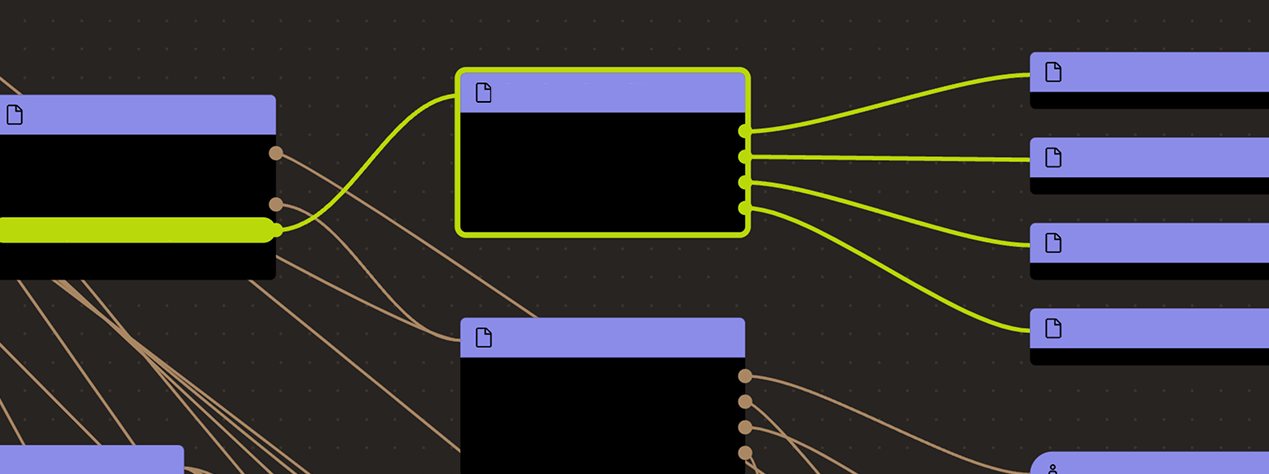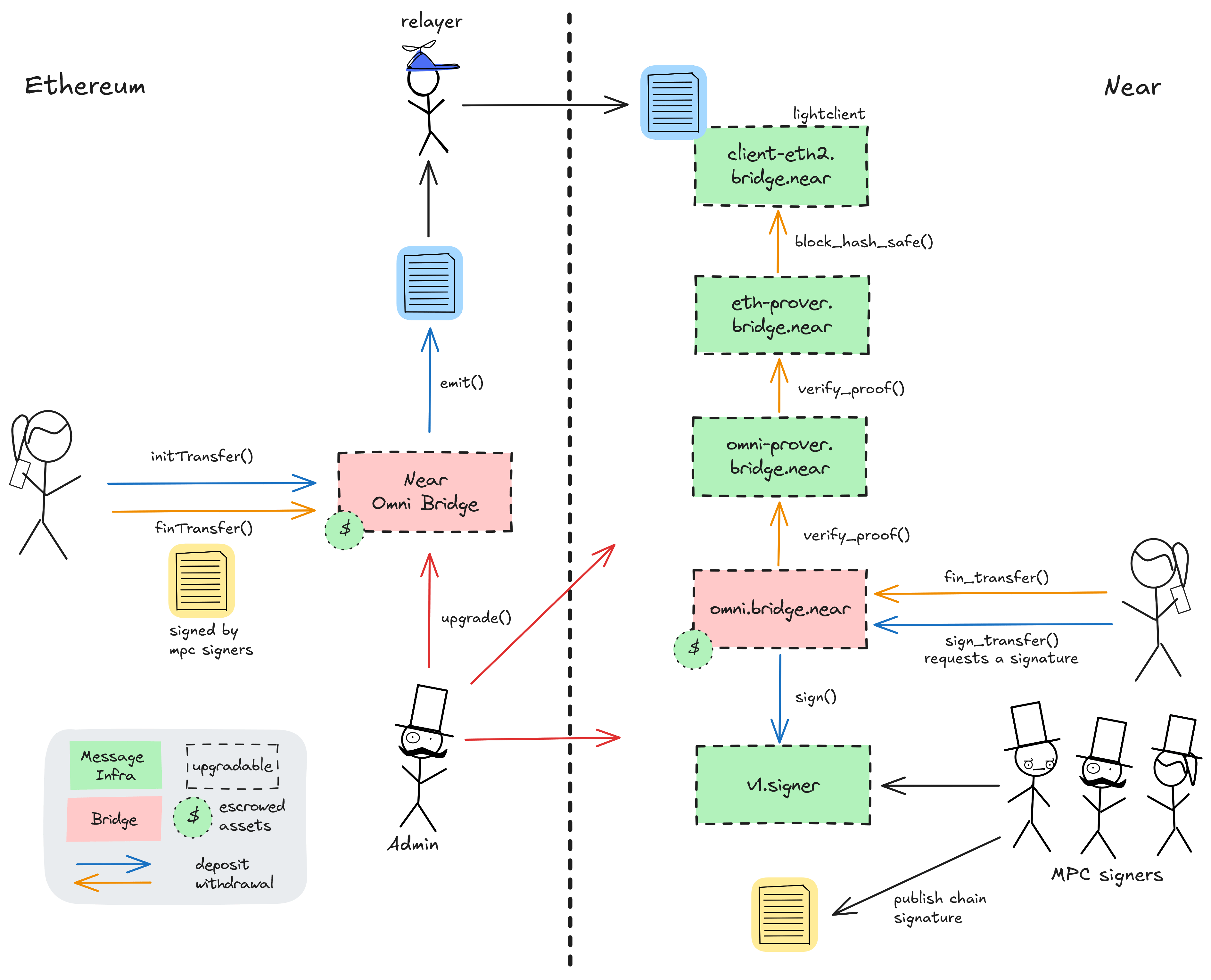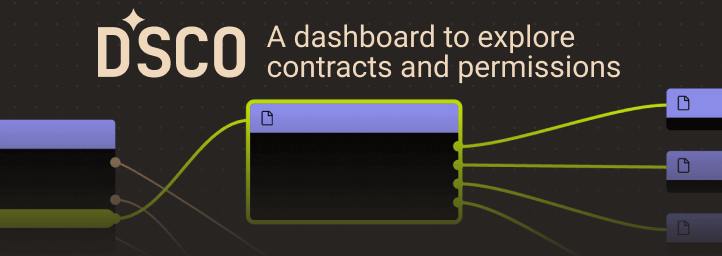Search
Search for projects by name
 Near Omni Bridge
Near Omni Bridge
L2BEAT Bridges is a work in progress. You might find incomplete research or inconsistent naming. Join our Discord to suggest improvements!
About
The NEAR Omni Bridge (also called Rainbow Bridge) is an MPC-validated multichain bridge. The MPC signature request/response logic is implemented on the NEAR blockchain and is called "Chain Signatures" there. Although it currently is limited to sending... tokens between Ethereum and Near + Aurora, future plans include other chains and more light clients on the NEAR blockchain.
About
The NEAR Omni Bridge (also called Rainbow Bridge) is an MPC-validated multichain bridge. The MPC signature request/response logic is implemented on the NEAR blockchain and is called "Chain Signatures" there. Although it currently is limited to sending... tokens between Ethereum and Near + Aurora, future plans include other chains and more light clients on the NEAR blockchain.
Funds can be stolen if
Funds can be frozen if
Users can be censored if
Principle of operation
The NEAR Omni Bridge is a Token Bridge that allows transferring assets and passing arbitrary messages between Ethereum, NEAR, and Aurora chains (and more chains in the future). The bridge locks tokens in the escrow contracts on Ethereum and mints / releases tokens on the Aurora or NEAR networks. When bridging back to Ethereum, tokens are burned / locked on Aurora / NEAR and then released from the escrow on Ethereum.
Funds can be frozen if a user bridges an unsupported token or specifies an unsupported destination address.
MPC validation and ethereum light client
Multi-party computation (MPC) is used to validate bridge transactions going out from NEAR. This usually means that multiple distributed signers need to combine their signatures to create a single signature authorizings a transaction. The MPC setup is offchain and from an Ethereum L1 perspective is equal to an EOA. Transfers from Ethereum to NEAR are validated by an Ethereum light client implemented as a smart contract on NEAR, of which the source code is unverified.
Funds can be stolen if the MPC signers collude or the MPC implementation is exploited.
Funds can be frozen if the MPC signers stop signing bridge messages.
Users can be censored if the MPC signers do not sign bridge messages.

Ethereum
Actors:
A Multisig with 3/5 threshold.
- Can upgrade with no delay
- OmniBridge
- Can interact with OmniBridge
- manage the pauser role and all pause flags (pause and unpause), manage token lists, claim ownership of token contracts and upgrade them, change the derived signer address for incoming message validation
- Can interact with OmniBridge
- validate bridge transactions (derived address of the MPC setup)
- Can interact with OmniBridge
- pause the bridge escrow for deposits and withdrawals


Ethereum
Escrow for all tokens of the NEAR Omnibridge.
- Roles:
- defaultAdmin: Near Omni Multisig
- nearBridgeDerivedAddress: EOA 1
- pauseAdmin: EOA 2
- This contract can store any token.
The standard implementation used for new tokens minted by the bridge.
Value Secured is calculated based on these smart contracts and tokens:
Main escrow for all tokens bridged from Ethereum via Near Omni Bridge to other chains.
The current deployment carries some associated risks:
Funds can be stolen if a contract receives a malicious code upgrade. There is no delay on code upgrades (CRITICAL).
